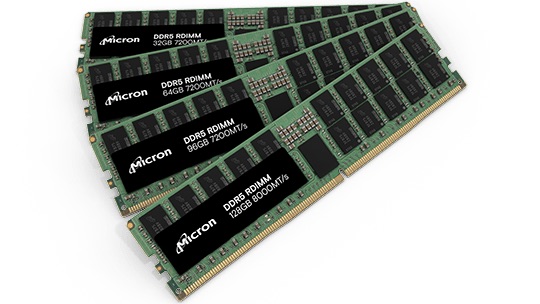
Micron has responded to the rising demand for high-capacity memory modules by fabricating 32Gb monolithic DDR5 dies and compiling them to make 128GB DDR5 RDIMMs.
The firm has also outlined a timeline for the next five years of development, up to 2028, but curiously absent is news of DDR6. DDR4 was announced in 2012, with DDR5 RAM announced eight years later in 2020.
We would have expected DDR6 to be available by 2028, based on this schedule. Still, the follow-up to LPDDR5X for laptops is low-power compression attached memory module (LPCAMM) 2 – a different form factor for memory – not LPDDR. DDR6 RAM is currently in development, with companies including Samsung working on the next generation of memory. But there’s no fixed date by which DDR6 memory will become commercially available.
The road to DDR6 is a long one
Micron’s new DRAM dies operate at up to 8,000MT/s and, have a 45% higher bit density than its predecessor while also being able to operate with much more aggressive timing latencies against the standard specifications.
Micron also claims it’ll improve energy efficiency by up to 24% compared with competitors' offerings, and can boost the time taken to train AI models, according to AnandTech.
While DDR6 is conspicuously absent from Micron’s roadmap, the launch of 128GB DDR5 RDIMMs in 2024 will be followed very shortly by MCRDIMMs of up to 256GB throughout 2024 and 2025, followed by MRDIMMs of more than 256GB. This final launch will boast speeds of 12,800MT/s. This will be owed to the improvements in manufacturing, with a path to getting 48Gb and 64Gb monolithic DDR5 dies.
The key to Micron’s roadmap is reliance on its 1β technology, which is its answer to the through-silicon-vias (TSVs) which has been responsible for most high-capacity RDIMMs for servers up to now. The downside with this technology is packaging, which raise costs, and a lack of energy efficiency.
Micron, in using 1β technology, is also hoping to soon reach 1TB RAM modules to meet the rising demand of systems for AI workloads as well as surging core counts as the best CPUs get better and better.
More from TechRadar Pro
- These are the best mobile workstations you can buy today
- We've rounded up the best RAM
- AMD, Meta are working on revolutionary tech that could recycle petabytes worth of RAM







